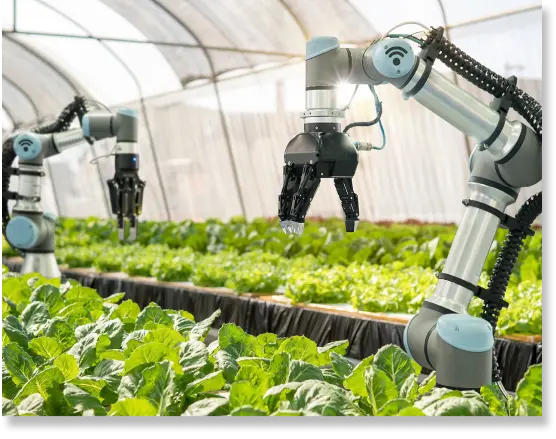Case Study | 21 July 2025
Revolutionizing Agriculture Through Smart Farming- An Agritech Startup’s Customer-Centric Transformation: A 2037 Outlook
Posted by : Ipseeta Dash
Focus on mass campaigning, product awareness, and strategic pricing propelled an agile agritech startup to dominate India’s smart farming sector.

An overview:
- An agritech startup firm intended to capitalize on the bolstering smart farming market, which is expected to grow at 23% as of 2023. The firm focused on grabbing 16% of market share by 2037, but struggled with low farmer integration, increased product expenses, and limited-service infrastructure.
- Despite agricultural exports surging to USD 50.5 billion as of 2022, small-scale farmers experienced a 25% post-harvest loss, owing to meager storage. Besides, more than 55% of water waste in flood irrigation and poor mechanization resulted in further challenges for farmers.
- Research Nester, by adopting the 3-stage current-desired-gap analytical model, ensured 4.5% of market penetration, followed by 17% of market by 2037, and catered to poor after-sales support, lack of awareness, and pricing gaps.


The Story
The international agriculture industry observed extraordinary development in the past decade, with agritech funds surging to USD 7.9 billion as of 2022, denoting an increase from USD 2.1 billion. India deliberately appeared as the sole player in this transformation by generating USD 1.7 billion in agritech funding as of 2022. This is effectively driven by the government’s interference in adopting digital farming through strategies, such as e-NAM and PM-KISAN. The country’s agricultural exports increased to USD 55.2 billion in 2023, and meanwhile, the regional food demand continued to grow with the overall population anticipated to reach USD 1.8 billion by 2030. Besides this, the agritech startup firm, founded in 2020, focused to capitalize on the smart farming revolution by providing AI-powered soil analytics, drone-based crop monitoring, and IoT-specific irrigation systems. Research Nester’s market analysis demonstrated that the international smart farming market is valued at USD 15 billion in 2021, which is projected to grow at 9.3% CAGR to reach USD 55 billion by the end of 2037. In addition, it is expected that Asia Pacific will dominate with a 47% of the overall share. Besides, these growth opportunities, the firm struggled to uplift, owing to the following challenges:
- Skepticism among farmers and the hesitance to implement high technology.
- The presence of price gaps, owing to the existence of the 18% GST on smart farming tools.
- Absence of internet connectivity in almost 65% of rural areas with the non-existence of localized technicians for repairment.
Our Solution:
To address the firm’s challenges, Research Nester implemented its 3-stage current-desired-gap (CDG) analytical model. This caters to first diagnosing the present state, with only 4.5% market penetration, owing to farmer distrust and high expenses. Then the focus is on the desired state, the 2037 goal, of gaining 15.5% market dominance, with more than 1.2 million active users. Then comes the gap analysis that reveals pivotal pain points- poor service infrastructure, low technology awareness, and expensive pricing. Research Nester has created a customer-centric initiative with these interventions:
- Free soil evaluation to develop trust through the freemium pricing model, with paid AI-powdered insights. This is followed by the partnership with NABARD to subsidize 35% of IoT device expenses for small-scale farmers.
- Focus on hyper-local awareness through campaigns by involving famous personalities to become brand ambassadors, especially for rural appeal. Additionally, the unveiling of the Smart Farming Chaupals (village demo) across more than 10 states.
- The provision of service assurance by offering 1.5-year free maintenance with every IoT devices. Further, it is essential to train over 450 technicians through the NSDC for last-mile repairs.
- The strategy of scalable expansion constituting solar-driven drones for off-the-grid farming and gaining market entry in Southeast Asia and Africa by the end of 2026.


Results
By implementing the pricing strategy, awareness campaigns, and service facilities, the agritech firm successfully acquired a market share of 9.9% in terms of sales during CY2023, denoting a 4.7 times increase from 2.3% in CY2021.
customized message
Ipseeta Dash is an accomplished Team Lead at Research Nester Private Limited, with over five years of specialized experience in delivering high-value market research and consulting solutions exclusively within the Energy & Power sector. Her expertise covers a wide array of segments, including renewable energy (solar, wind, hydro, bioenergy), power generation (thermal, nuclear, combined cycle), smart grid technologies, battery energy storage systems (BESS), hydrogen economy, and energy efficiency solutions.
Ipseeta oversees end-to-end project lifecycles, ensuring each engagement delivers timely, strategic, and client-aligned insights. Her role extends beyond execution—she plays a pivotal part in client engagement, developing tailored deliverables, providing robust pre-sales support, and crafting compelling proposals for high-value clients across the global energy value chain.
Her structured and data-driven approach, combined with a deep understanding of market evolution and sustainability trends, supports informed decisions around technology adoption, investment planning, policy evaluation, and competitive positioning. Known for her analytical rigor and collaborative leadership, Ipseeta has consistently driven project excellence, client satisfaction, and team performance.
With a strong commitment to research integrity and strategic impact, she continues to be a trusted advisor for stakeholders navigating complex challenges and emerging opportunities in the global energy landscape.
Thank you for contacting us!
"We have received your request for proposal. Our research representative will contact you shortly."
Copyright @ 2025 Research Nester. All Rights Reserved.


